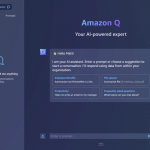Bard is an artificial intelligence (AI) program developed by Google that allows users to interact with a conversational agent that can generate text, images, code, and more. Bard is designed to help users with various tasks, such as brainstorming, writing, learning, and entertainment. Bard is also integrated with Google apps and services, such as Gmail, Docs, Drive, Maps, YouTube, and more, to provide relevant information and suggestions. Bard is a powerful tool that can unlock innovation and collaboration for users across different domains and industries.
Bard’s Capabilities: What Can Bard Do for You?
Bard has a wide range of capabilities that can assist users with different needs and goals. Some of the main capabilities of Bard are:
• Text generation: Bard can generate text for various purposes, such as poems, stories, scripts, essays, summaries, reviews, emails, captions, headlines, and more. Users can provide a prompt or a topic for Bard to start writing, or they can collaborate with Bard by giving feedback or suggestions. Bard can also generate text in different languages and styles.
• Image generation: Bard can generate images for various purposes, such as logos, icons, portraits, landscapes, cartoons, memes, and more. Users can provide a description or a sketch for Bard to create an image, or they can edit or manipulate the image generated by Bard. Bard can also generate images based on text or vice versa.
• Code generation: Bard can generate code for various purposes, such as web development, data analysis, machine learning, game development, and more. Users can provide a specification or a requirement for Bard to write code, or they can debug or optimize the code generated by Bard. Bard can also generate code based on natural language or pseudocode.
• Data analysis: Bard can analyze data for various purposes, such as statistics, visualization, modeling, prediction, and more. Users can provide a dataset or a query for Bard to perform data analysis, or they can explore or interpret the results generated by Bard. Bard can also analyze data from different sources and formats.
Features of Bard’s Capabilities
| Capability | Feature | Example |
|---|---|---|
| Text generation | Language | Generate text in English, Hindi, French, etc. |
| Style | Generate text in formal, informal, humorous, poetic, etc. styles | |
| Domain | Generate text for fiction, non-fiction, education, business, etc. domains | |
| Image generation | Description | Generate an image based on a textual description |
| Sketch | Generate an image based on a sketch or a drawing | |
| Text-to-image | Generate an image based on a text input | |
| Image-to-text | Generate a text based on an image input | |
| Code generation | Specification | Generate code based on a specification or a requirement |
| Debugging | Generate code that fixes errors or bugs | |
| Optimization | Generate code that improves performance or efficiency | |
| Natural language | Generate code based on natural language input | |
| Data analysis | Statistics | Generate statistics such as mean, median, mode, standard deviation etc. |
| Visualization | Generate charts such as bar chart , pie chart , line chart etc. | |
| Modeling | Generate models such as regression , classification , clustering etc. | |
| Prediction | Generate predictions based on data input |
Bard’s Integration
How Can Bard Work with Google Apps and Services?
Bard is integrated with Google apps and services to provide users with relevant information and suggestions from various sources. Some of the main integrations of Bard are:
• Gmail: Bard can access Gmail to retrieve emails related to the user’s query or task. For example,
⦁ If the user wants to plan a trip , Bard can find emails that contain travel dates , flight details , hotel reservations , etc.
⦁ If the user wants to write an email , Bard can find emails that match the recipient , subject , tone , etc.
• Docs: Bard can access Docs to retrieve documents related to the user’s query or task. For example,
⦁ If the user wants to write an essay , Bard can find documents that contain relevant information , sources , citations , etc.
⦁ If the user wants to edit a document , Bard can find documents that contain errors , suggestions , comments , etc.
• Drive: Bard can access Drive to retrieve files related to the user’s query or task. For example,
⦁ If the user wants to create a logo , Bard can find files that contain images , icons , fonts , etc.
⦁ If the user wants to share a file , Bard can find files that match the criteria , such as size , format , permission , etc.
• Maps: Bard can access Maps to retrieve information related to the user’s query or task. For example,
⦁ If the user wants to find a place , Bard can find places that match the name , category , location , rating , etc.
⦁ If the user wants to get directions , Bard can find routes that match the mode , traffic , distance , time , etc.
• YouTube: Bard can access YouTube to retrieve videos related to the user’s query or task. For example,
⦁ If the user wants to learn something , Bard can find videos that contain tutorials , lectures , demonstrations , etc.
⦁ If the user wants to watch something , Bard can find videos that contain entertainment , news , sports , etc.
• Google Flights and Hotels: Bard can access Google Flights and Hotels to retrieve information related to the user’s query or task. For example,
⦁ If the user wants to book a flight , Bard can find flights that match the origin , destination , date , price , etc.
⦁ If the user wants to book a hotel , Bard can find hotels that match the location , rating , price , amenities , etc.
The table below summarizes some of the features of Bard’s integration with Google apps and services:
| Integration | Feature | Example |
|---|---|---|
| Gmail | Email retrieval | Retrieve emails that contain travel dates, flight details, hotel reservations, etc. |
| Email generation | Generate emails that match the recipient, subject, tone, etc. | |
| Docs | Document retrieval | Retrieve documents that contain relevant information, sources, citations, etc. |
| Document generation | Generate documents that match the topic, format, style, etc. | |
| Drive | File retrieval | Retrieve files that contain images, icons, fonts, etc. |
| File generation | Generate files that match the criteria, such as size, format, permission, etc. | |
| Maps | Place retrieval | Retrieve places that match the name, category, location, rating, etc. |
| Direction retrieval | Retrieve routes that match the mode, traffic, distance, time, etc. | |
| YouTube | Video retrieval | Retrieve videos that contain tutorials, lectures, demonstrations, etc. |
| Video generation | Generate videos that match the entertainment, news, sports, etc. | |
| Google Flights and Hotels | Flight retrieval | Retrieve flights that match the origin, destination, date, price, etc. |
| Flight generation | Generate flights that match the criteria, such as airline, class, duration, etc. | |
| Hotel retrieval | Retrieve hotels that match the location, rating, price, amenities, etc. | |
| Hotel generation | Generate hotels that match the criteria, such as name, style, service, etc. |
Conclusion
Bard is an AI program that can help users with various tasks by generating text, images, code and more. Bard is also integrated with Google apps and services to provide relevant information and suggestions from various sources. Bard is a powerful tool that can unlock innovation and collaboration for users across different domains and industries.




6 Comments